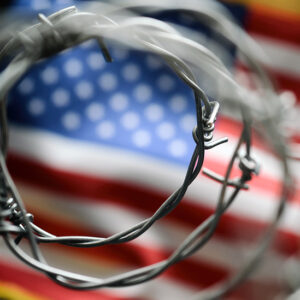SIMMONS: Tackling Fentanyl Crisis Starts With Giving Law Enforcement the Best Technology Available

n his State of the Union address, President Biden pledged to tackle one of the biggest problems facing Americans: the fentanyl crisis. With record-high drug overdose deaths, and kids under 14 dying at the highest rate among all age groups, it is clear that new approaches are required. Unfortunately, the administration is doubling down on outdated technology to solve a problem that we know requires intelligent, modern solutions to stay ahead of those who want to harm our communities.
If we are going to get serious about saving lives, we need an all-of-the-above approach that starts with providing our law enforcement officers with the cutting-edge capabilities at our disposal to detect and seize deadly drugs before they enter our communities.
The mission of U.S. Customs and Border Protection is to “Protect the American people, safeguard our borders, and enhance the nation’s economic prosperity.” As someone who proudly worked at this law enforcement agency for 25 years, I know that CBP officers around the country take their duty seriously. Yet, what we ask of CBP officers is, frankly, staggering.
With more than 11 million maritime containers arriving at our seaports annually, another 11 million arriving at land ports by truck, and 2.7 million by rail, these law enforcement officers face the herculean task of adequately identifying and stopping all illegal drugs and weapons during the security screening process. Unfortunately, CBP scans less than 10 percent of all cargo entering the United States, even though the mandate is 100 percent, as required by the 9/11 Commission report and subsequent federal legislation related to the scanning of maritime cargo.
To make matters worse, the scanning is done only with the limited capability X-ray machines. Over the last 50 years, CBP has used X-ray machines to search for drugs and other illicit materials at our ports and borders. Unfortunately, X-ray machines have limited penetration capabilities and cannot detect anomalies inside dense cargo. This well-known inadequacy — the inability to see through dense cargo — allows criminals to circumvent existing scanning systems by hiding fentanyl and other drugs within dense materials that X-ray cannot penetrate.
Much more must be done, and the best technology available must be used. For example, in 2019, CBP conducted a pilot program at the U.S.-Mexico border with a newly developed advanced muon tomography system, which can effectively detect anomalies within dense cargo. During the pilot program, this system was responsible for a significant drug seizure after the smuggling methodology used during the pilot easily defeated the on-site X-ray machines.
The need to deploy advanced scanning technology is so urgent that America’s busiest port, the Port Authority of New York and New Jersey, requested to Congress that a comprehensive approach be deployed there and integrated into CBP’s current suite of technology. Furthermore, several members of Congress, in both the House and Senate, have urged CBP to procure and deploy additional passive scanning technology. Notably, funding is already available through the Fiscal Year 2023 Omnibus Funding Bill, and CBP would need to redirect a small portion of those funds toward more comprehensive systems.
Illicit drugs are ravaging our cities and robbing too many Americans of their lives. President Biden is right to prioritize the battle against fentanyl, but let’s be clear: our ports of entry are our last line of defense before drugs enter our communities, and we must give our law enforcement officers the best technology available to spot and stop dangerous drugs.
This should also be a priority for all lawmakers — regardless of party affiliation or home state. Until it is, we will continue to lose this critical fight — one that we desperately need to win for the future of our country.
Please follow DVJournal on social media: Twitter@DVJournal or Facebook.com/DelawareValleyJournal



